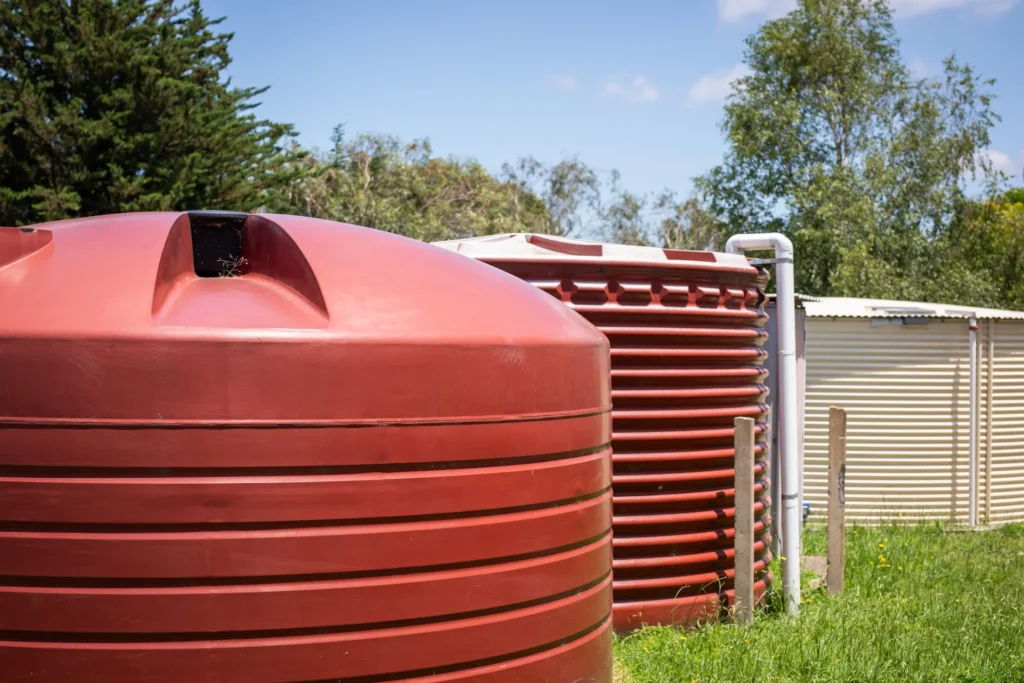
Rainwater Tank Services
Expert rainwater tank services including installation, pump setup, and maintenance to keep your system running smoothly and efficiently.
Request a call back
Fill out this form and one of our friendly team will contact you to discuss how we can help.
Why clients choose us
When it comes to critical systems, clients choose Aspired Energy for our proven expertise, commitment to safety, and reliable, end-to-end support.
Expertise and Experience
We bring years of specialized knowledge in rainwater tank installation, maintenance, and repair. Our team includes licensed plumbers and certified technicians who understand local regulations and environmental conditions, ensuring your system is compliant and optimized for performance.Customised Solutions
We assess your property’s unique requirements—roof size, rainfall patterns, and water usage—to recommend the ideal tank size, material (poly, steel, concrete, or fiberglass), and setup. Whether for garden irrigation, household use, or commercial applications, we tailor solutions to maximize efficiency and savings.Quality Products
We partner with leading manufacturers to offer durable, UV-resistant, and food-grade tanks with warranties up to 20 years. Options like first-flush diverters, leaf filters, and smart monitoring systems ensure clean, reliable water with minimal maintenance.Cost Savings and Rebates
Our systems help reduce water bills by up to 30% by offsetting mains water use for toilets, laundry, and gardening. We guide you through available government rebates, potentially saving you hundreds or thousands on installation costs.Environmental Impact
We’re committed to sustainability, helping you lower your carbon footprint by reducing reliance on mains water and minimizing stormwater runoff, which protects local waterways from erosion and pollution.Reliable Support
From initial consultation to post-installation maintenance, we offer comprehensive support. Our maintenance plans keep your tank clean and efficient, with easy access to troubleshooting and repairs.Proven Results
Our customers report significant water savings—up to 50,000 liters annually—and peace of mind during water restrictions or droughts. We’ve successfully installed systems for homes, businesses, and farms, earning trust through consistent delivery.Transparent, Upfront Pricing
No hidden fees, just clear, honest quotes so you know exactly what to expect.

Rainwater Tank Services
Our rainwater services ensure your system operates efficiently and reliably. From pump installation and electrical wiring to automation and ongoing maintenance, we provide expert solutions that help you maximise water conservation while enhancing the functionality of your rainwater tanks.
- Polyethylene (Poly) tanks are lightweight, UV-resistant, and cost-effective, available in a variety of colors and sizes ranging from 500 to 50,000 liters. Steel tanks, whether galvanized or stainless, offer durability and corrosion resistance, making them ideal for larger capacities or fire-prone areas. Concrete tanks provide long-lasting performance while maintaining water neutrality, commonly used for underground or high-volume storage. Fiberglass tanks are strong and resistant to rust and chemicals, well-suited for harsh climates.
Capacity Options
Rainwater tanks range from slimline models holding 200 to 3,000 liters, ideal for small urban homes, to large rural tanks with capacities of 10,000 liters or more, suitable for extensive water needs. Tank size is determined by factors such as roof area, local rainfall, and intended usage—for example, a 5,000-liter tank is typically sufficient for garden irrigation and toilet flushing in a small household.Filtration Systems
Leaf guards and screens prevent debris such as leaves and twigs from entering the tank, protecting water quality. First-flush diverters redirect the initial flow of rainwater, which may carry dust and pollutants, ensuring that cleaner water is stored. Fine mesh filters remove smaller particles, making the water suitable for potable use or high-quality non-potable applications.Overflow Management
Overflow outlets safely direct excess water to stormwater systems or soakage pits, preventing flooding and water damage. Optional diverters can also be installed to recharge groundwater or irrigate gardens, making the most of surplus rainwater.Pump Systems
We use submersible or external pumps to distribute rainwater efficiently to household systems such as toilets and laundry, as well as irrigation setups. Pressure-sensitive pumps ensure a consistent water flow, while energy-efficient models help reduce power consumption and lower operating costs.Accessories for Usability
Tap outlets provide convenient access to water for garden hoses or buckets, making everyday use simple. Water level indicators enable you to monitor tank levels either visually or remotely through smart sensors. Inspection hatches offer easy access for cleaning and maintenance, helping to keep your rainwater system in optimal condition.Safety and Compliance Features
UV protection helps prevent algae growth in plastic tanks, maintaining water quality. Food-grade linings ensure the safety of water for drinking (when treated) or other household uses. Backflow prevention valves are installed to stop tank water from contaminating the mains supply, complying with local plumbing regulations.Smart Technology
IoT-enabled monitors allow you to track water levels, usage, and pump performance conveniently through smartphone apps. Automated systems seamlessly switch between rainwater and mains water when tank levels are low, ensuring an uninterrupted water supply.Aesthetic and Space-Saving Designs
Slimline or modular tanks are designed to fit into tight urban spaces or beneath decks, maximizing convenience without compromising space. Custom colors and cladding options help these tanks blend seamlessly with your home’s exterior. For a minimal visual footprint, underground tanks provide an effective and discreet water storage solution.Durability and Warranties
Our tanks are engineered to withstand extreme weather conditions and come with warranties ranging from 10 to 25 years. They feature reinforced bases and fittings designed to endure seismic activity and high-wind environments, ensuring long-lasting durability and performance.
Rainwater Services for home owners, businesses and industries
We proudly serve a diverse range of clients across South Australia, including residential homeowners, commercial businesses, industrial facilities, and property developers. No matter the size or complexity of your electrical needs, our skilled team delivers tailored solutions to meet your requirements.
Get assistance now

Need A Fix Urgently? Contact Us Now
need urgent assistance?
We provide fast, reliable emergency rainwater services to address urgent issues such as pump failures, leaks, or contamination risks. Our skilled technicians respond promptly to restore your system’s operation, minimizing water loss and disruption. Available 24/7, we ensure your rainwater supply stays safe and functional when you need it most.

Frequently Asked Questions
We’ve answered some of the most common queries to help you better understand our process, standards, and how we keep your systems running smoothly and safely.
A rainwater tank collects runoff from roofs via gutters, filters debris, and stores water for uses like gardening, toilet flushing, or (with treatment) drinking. Systems include tanks, filters, pumps, and overflow outlets to manage water efficiently.
- Cost Savings: Reduce water bills by up to 30% by offsetting mains water use.
- Sustainability: Lower your carbon footprint and ease pressure on municipal water supplies.
- Resilience: Access water during restrictions or droughts.
- Rebates: Many regions offer financial incentives, potentially saving hundreds on installation.
Tank size depends on roof area, local rainfall, and water usage. For example:
- Small home (gardening/toilets): 2,000–5,000 liters.
- Large household (full use): 10,000–20,000 liters.
A rule of thumb: 1 mm of rain on 1 m² of roof yields 1 liter. A 200 m² roof in a 500 mm rainfall area could collect 100,000 liters annually. Consult a supplier for a tailored assessment.
However, you can also go as big as you like depending on the land size you are working with.
Rainwater is naturally soft but may contain contaminants from roofs or air. For drinking, install first-flush diverters, fine filters, and UV or chemical treatment systems. Check local regulations, as potable use often requires council approval.
- Polyethylene: Affordable, lightweight, UV-resistant; ideal for most homes.
- Steel: Durable, fire-resistant; suits rural or large systems.
- Concrete: Long-lasting, neutral pH; often underground.
- Fiberglass: Chemical-resistant; good for harsh climates.
Choose based on budget, climate, and aesthetic preferences.
Minimal but regular:
- Clean gutters and leaf screens every 3–6 months.
- Check first-flush diverters and filters annually.
- Inspect tanks for sludge or algae every 2–3 years; professional cleaning costs ~$100–$300.
- Service pumps as per manufacturer guidelines.
Requirements vary by region. Small tanks (<5,000 liters) often need no permit, but larger or plumbed systems may require council approval, especially for potable use or overflow connections. Check with your local authority.
Costs depend on size, material, and features:
- Small poly tank (2,000 liters): $800–$1,500 installed.
- Large steel tank (20,000 liters): $3,000–$7,000 installed.
- Add $500–$2,000 for pumps, filters, or plumbing.
Rebates or subsidies may offset costs; check council websites.
Yes, with the right setup. A 10,000-liter tank with a pump and filters can supply toilets, laundry, and irrigation, reducing mains water use by 20–50%. For full household use (including drinking), ensure adequate capacity and treatment systems.
Overflow systems direct excess water to stormwater drains, soakage pits, or gardens. Proper setup prevents flooding and complies with local drainage laws.
Yes. Slimline tanks (200–3,000 liters) fit small spaces, and underground or under-deck options minimize visual impact. Urban homes can save 10,000–30,000 liters annually for gardening or non-potable use.
Yes, but efficiency depends on rainfall and roof size. In arid regions (<300 mm/year), larger tanks or multiple tanks maximize collection during rare rain events. Focus on high-efficiency uses like drip irrigation.
- Poly tanks: 15–25 years.
- Steel/concrete: 30–50+ years.
- Fiberglass: 20–40 years.
Warranties typically cover 10–20 years, depending on the manufacturer.
Yes. Basic tanks have sight gauges, while advanced systems offer smart sensors or IoT apps to track levels, usage, and pump status remotely.
Absolutely. Rainwater harvesting reduces stormwater runoff, preventing erosion and waterway pollution. It also lowers energy use for municipal water treatment, cutting CO₂ emissions by ~0.5 kg per 1,000 liters saved.
